I am using OpenCV to detect ellipses in a binary image as shown below. In the image, there are eight ellipses to be detected. I can use findContours to obtain a lot of contours including the eight ellipses. The problem is: how can I judge and which one is ellipse which one is not? How to remove all the other false detections?



